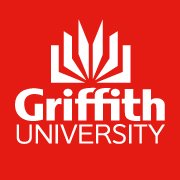Full description
Although the risk is considered small when compared to the risks associated with drinking water which has not been treated for pathogen removal, chemical by-products arising from water disinfection may be harmful to human health. This collection contains the analytical data from a study of the prevalence of the four regulated trihalomethanes (THM), as well as the potently carcinogenic nitrosamine, N-nitrosodimethylamine (NDMA) in South East Queensland (SEQ) drinking water supplies. NDMA and THM formation potential experiments were undertaken using source waters from a number of SEQ water treatment plants (WTPs), as well as directly from the Logan River, Teviot Brook and Mary River. A general analysis of THM concentrations present in a large number of Queensland source waters was also undertaken, using existing data collected by Queensland Health Forensic and Scientific Services. In addition to the above, advanced oxidation and coagulation procedures were assessed in relation to their impact on disinfection by-product (DBP) formation. The research was carried out in collaboration with key South East Queensland water utilities (Seqwater, Allconnex Water, LinkWater, The Water Grid Manager, and Veolia Water Australia). The aim of this project is to use targeted strategies for the improved removal of disinfection by-product (DBP) forming constituents including dissolved organic material (DOM) and halides from source waters prior to disinfection. Key research questions include: Which emerging and regulated DBPs are most relevant in the South East Queensland context? What effect does blending desalinated and fresh water in the grid influence DBP formation? What components of Natural Organic Matter NOM are not removed by enhanced coagulation? Can strategies to remove natural organic matter or halides be successfully applied and minimise DBP formation?Issued: 2012
Data time period:
2012-07-01 to 2012-12-07
Spatial Coverage And Location
text: South East Queensland
text: South East Queensland
User Contributed Tags
Login to tag this record with meaningful keywords to make it easier to discover
- DOI : 10.4225/01/513D576D36128

- Handle : 10072/395755



